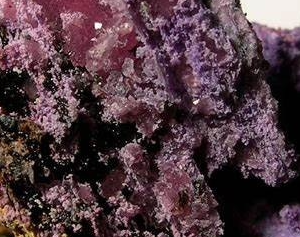Purple Iolite
Purple Iolite is a striking variety of iolite, a gem-quality form of the mineral cordierite. Known for its vibrant hues, ranging from lavender to deep violet, purple iolite is a popular gemstone used in jewelry for its beauty, durability, and relatively affordable price compared to other purple gemstones like amethyst or tanzanite.
Characteristics of Purple Iolite:
- Color: The color can range from pale lavender to a rich violet or indigo. The purple hues are due to the presence of iron and titanium in the crystal structure.
- Composition: Cordierite (Al3Mg₄Si₅O₁₈), a silicate mineral with a complex structure, is responsible for iolite’s unique color. The purple variety, sometimes referred to as violet iolite, is a more intense form of the mineral.
- Transparency: Typically transparent to translucent. The clarity of the stone can vary, with high-quality purple iolite being relatively clear with few inclusions.
- Hardness: 7 to 7.5 on the Mohs scale, which makes iolite durable enough for most types of jewelry, though it should still be handled with care to avoid scratches.
- Luster: Vitreous (glass-like), giving the stone a polished, sparkling appearance when cut.
Formation:
Iolite forms in metamorphic rocks, especially in regions with volcanic activity. It often crystallizes in granite or schist, forming as elongated, tabular crystals. The purple color is primarily due to iron content and the mineral’s ability to shift color slightly depending on the angle of light, which adds to its aesthetic appeal.
Geographic Locations:
- Sri Lanka: Known for producing high-quality iolite, including the purple variety.
- India: Another key producer, particularly in the region of Orissa.
- Tanzania: Some of the finest examples of iolite, including purple iolite, come from Tanzania.
- Brazil: Known for producing a variety of gem-quality iolite, including purple hues.
- Madagascar: A notable source for violet-colored iolite as well.
Uses:
- Jewelry:
- Purple iolite is commonly used in rings, necklaces, earrings, and bracelets. Its rich color and brilliance make it suitable for both casual and high-end jewelry.
- Iolite is sometimes cut as a faceted stone to enhance its sparkle, but it is also used in cabochon cuts and beads.
- Decorative: Due to its color and luster, purple iolite is sometimes used in ornamental items or as a collector’s gem.
- Metaphysical Properties:
- Spiritual Awakening: Purple iolite is often associated with the third-eye chakra, believed to promote intuition, insight, and spiritual growth. It is also linked to the throat chakra, helping with communication and self-expression.
- Emotional Healing: It is thought to help release past emotional trauma and foster a sense of emotional balance and inner peace.
- Courage and Clarity: Purple iolite is believed to bring clarity to the mind, stimulate creativity, and encourage individuals to pursue their personal goals and dreams.
Care and Maintenance:
- Avoid Harsh Chemicals: Clean purple iolite with mild soap and warm water. Avoid using strong chemicals, ultrasonic cleaners, or steam cleaning, as they could damage the stone.
- Handling: Although it is fairly durable (7 to 7.5 on the Mohs scale), iolite can still be scratched by harder gemstones like diamonds. Handle with care to prevent damage.
- Storage: Store separately from other gemstones to avoid scratching. Use a soft cloth or jewelry pouch to keep your iolite jewelry safe when not in use.
Rarity and Value:
Purple iolite is generally more affordable than other purple gemstones like amethyst or tanzanite, but high-quality pieces with intense color and clarity can still be quite valuable. Its availability and relatively low price make it a popular choice for those seeking a unique purple gemstone without breaking the bank.

Leave a Reply
Want to join the discussion?Feel free to contribute!